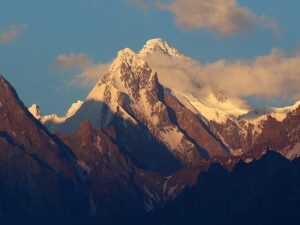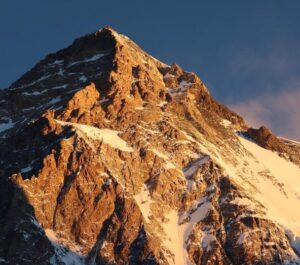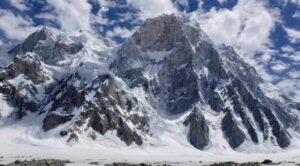A strong Polish team led by Marcin Tomaszewski leaves for Pakistan on November 27. Their daring goal: a frozen Shipton Spire in the Trango Valley.
No one knows whether is possible to climb a Karakorum big wall at this time of year, because no one has tried before, Tomaszewski told ExplorersWeb.
Strictly speaking, as the Polish climber readily admits, it’s not a winter climb because it won’t take place during the calendar winter.
“We are limited by the standard policy duration [of climbing permits],” he said. “Our goal is to find out, first of all, whether such kind of climb is possible. Winters in the Karakorum are harsh with very strong winds. Nobody before us has tried to climb a big wall route there in winter, least of all up a new line.”

Tomaszewski on a first ascent in Alaska. Photo: David Kaszlikowski
No one has ever climbed a big, high wall in such cold
To prepare for the challenge, the team has trained in the Alps. Recently, they climbed the Grand Jorasses. Still, conditions in Pakistan will be much harder.
“Acclimatization should not be a problem, since Shipton Spire is below 6,000m,” Tomaszewski said. “We will decide when we arrive on the best way to acclimatize. The real challenge is how to build up resistance to cold. I think it is a matter of acclimatization, hydration, nutrition, character, and the right equipment.”
Although the climbers will take the warmest down clothing they can find, “it is difficult to reconcile good thermals and technical climbing, which requires freedom of movement,” he says. “On the other hand, we will spend several hours standing still [on belays].”
Tomaszewski collaborates with Pajak, a Polish company that will design special clothing for them. Still, they will have to be careful to avoid frostbite.

Damian Bielecki (left) and Marcin Tomaszewski at the Grandes Jorasses, Chamonix last week. Photo: Marcin Tomaszewski
How the team came together
Pakistan will test how the climbers work as a team. “This will be our first climb together,” Tomazsewski said. “Pawel Haldas and Damian Bielecki are climbers of the new generation.
“I met them after I offered a box of beer as a prize for the climbing team that repeated my solo winter line on Kazalnica Mieguszowiecka, the largest wall in the Polish Tatras. They climbed it, they drank the beer, and now we’re going to Pakistan.”
Tomaszewski has already climbed on the Trango. He opened the nearly 2,000m-long ‘Bushido’ (A4, VII+) on the Great Trango Tower. He also won applause after pioneering ‘Superbalance’ (37 high-difficulty pitches) on Baffin Island. Still, nothing can compare to the upcoming expedition.
“We set ‘Bushido’ — with Markien Raganowicz– in the summer when it was warm and comfortable,” Tomaszewski said. “But we climbed Superbalance on [Baffin Island’s] Polar Sun Spire in April, in -30˚ and bad weather. I believe that was the closest to this.”

Tomaszewski and partner climbed on Baffin Island in arctic conditions. Photo: Marcin Tomaszewski
Technical winter climbing
“From the very beginning of my career, I have been involved in technical winter climbing,” said Tomaszewski. “I have many solo winter routes and routes with partners in the Tatra Mountains. These are very demanding ridge walls.”
He has climbed regularly in winter in the Tatras, Norway, and the Alps, but has not ventured to either the Himalaya or Karakorum at that time of year.
“Many climbs during [Europe’s] winter do not correspond to what we may encounter in the Karakorum, because of the mild temperatures, i.e. around -15˚C, which is not a big problem.”
Would Tomaszewski ever be interested in attempting a winter 8,000m peak such as K2?
“I do not do that type of climbing,” he answered. “I have always dreamed of huge walls, exposure, and great technical difficulties. I am consistent in this.”

Marcin Tomaszewski. Photo: CAMP
A new threshold
The fact is that winter climbing is catching the attention of a few bold teams which view the cold season as an opportunity to recover the spirit of exploration that has faded from the 8,000’ers.
“Winter is definitely a new threshold to a different kind of alpinism,” he said. “I just don’t know if we will manage to go through it.”
Tomaszewski admits that the chances of success are considerably less than in summer. “But we decided that it is more worth trying something impossible than climbing lines that are within reach.”





